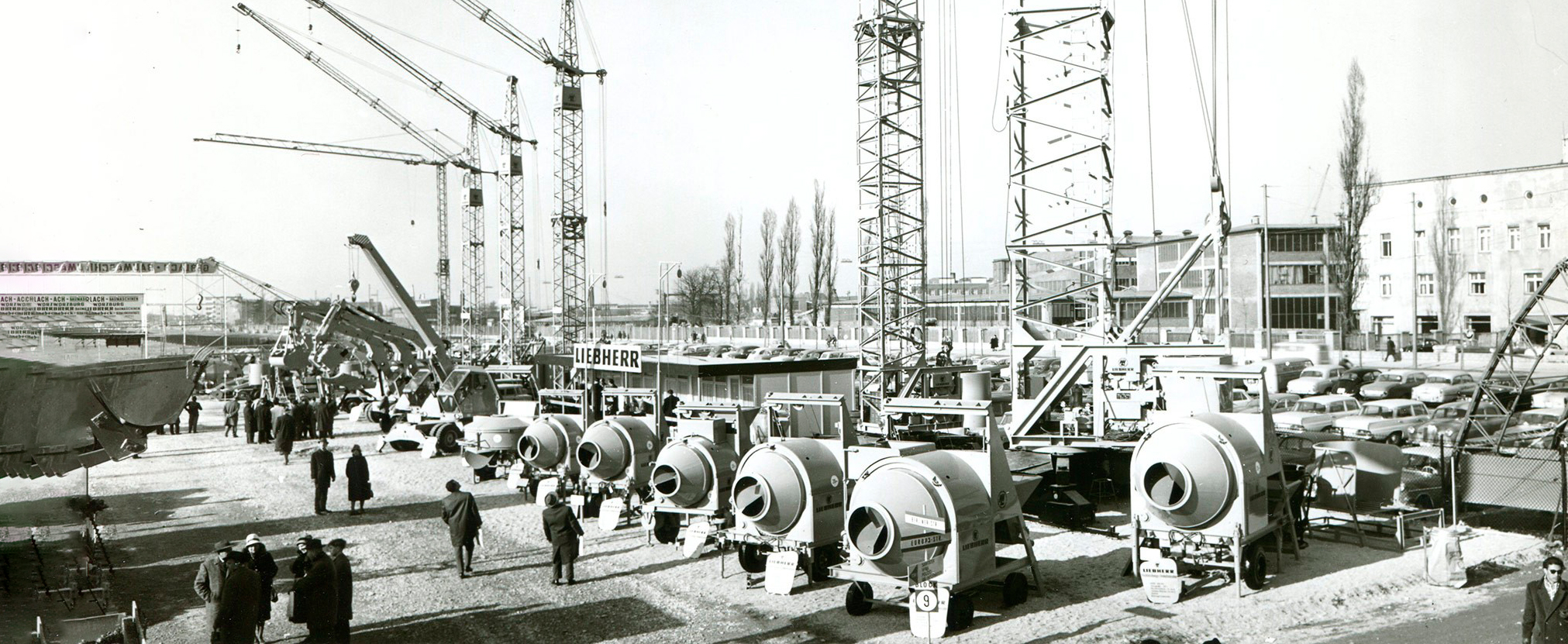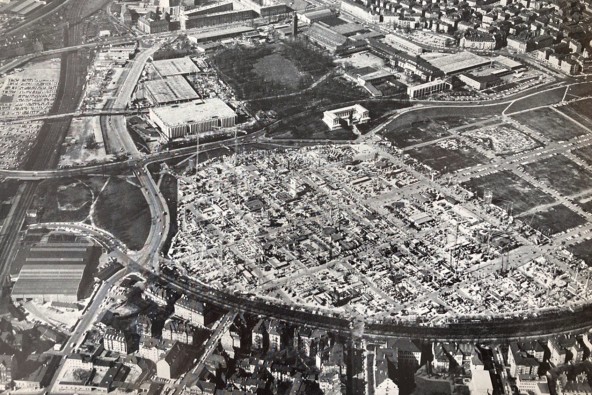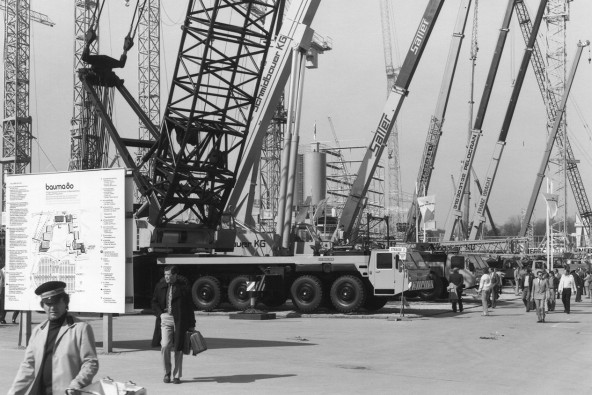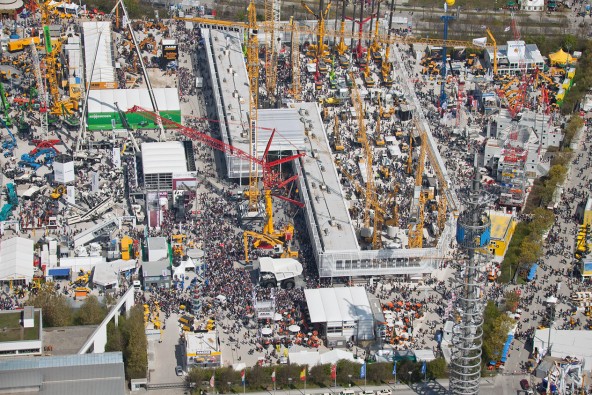
Learn about Bauma's success story
The Spring Fair-Sale Took Place in 1954.
The success story of Bauma began in 1954 with a spring show for construction machinery. At the time, the trade show was still small and was held annually in the Theresienhöhe district in the heart of Munich. Fifty-eight exhibitors presented their products on 12,000 m² of exhibition space over nine days, attracting approximately 8,000 visitors. Since World War II, the trade show has focused on simplifying and reducing the complexity of construction work through specialized machinery.
In 1956, two years after the first event, Liebherr participated as one of the exhibitors. Only five years after its founding, Liebherr had already developed an impressive range of construction machinery. In addition to tower cranes, the company showcased the L 300, one of the first hydraulic excavators in Europe.
Interest in the exhibition grew rapidly, and by 1957, the number of visitors had increased significantly. In 1959, the event was renamed the "German Construction Machinery Exhibition" due to rising international demand for German construction equipment. By this time, the exhibition space had expanded to 76,000 m², with 320 participants.
As demand for a larger venue continued to grow, the exhibition moved to Theresienwiese in 1961, covering an area of 180,000 m². Just one year later, in 1962, Bauma relocated again to Oberwiesenfeld, further expanding its exhibition space to 200,000 m².

Bauma is taken over by Messe München
In 1967, Messe München took over the organization of the Bauma trade fair, hosting it for the last time in Oberwiesenfeld before the site was repurposed for the 1972 Olympic Games. Five years later it was taken over completely by Messe München.
In 1967, Messe München took over the organization of the Bauma trade fair, hosting it for the last time in Oberwiesenfeld before the site was repurposed for the 1972 Olympic Games. Five years later it was taken over completely by Messe München.
In 1969, the trade show returned to Theresienwiese and has been held every two years since then. That year, visitors from 50 different countries attended the event. In 1971, Bauma became the world’s largest construction machinery exhibition, with 824 participants from 20 countries presenting their products.
Due to a recession in the construction industry, Bauma was canceled in 1975 following pressure from the major German exhibitors. However, from 1977 onwards, it was scheduled to take place every three years, alternating with Intermat (France) and Conexpo (USA). During this period, 963 exhibitors presented their construction equipment across 317,000 m² of exhibition space, attracting 135,000 visitors from 81 countries.

The Environment Becomes Important
By the 1980s, environmental concerns became more relevant in the construction industry, particularly as construction equipment was increasingly used in urban environments. As the exhibition continued to expand, the Theresienwiese venue reached its maximum capacity. Therefore, 1995 marked the last time Bauma was held at Theresienwiese before it moved to Munich-Riem in 1998. The new location provided 30 times more space than the original exhibition area.
By the 1980s, environmental concerns became more relevant in the construction industry, particularly as construction equipment was increasingly used in urban environments. As the exhibition continued to expand, the Theresienwiese venue reached its maximum capacity. Therefore, 1995 marked the last time Bauma was held at Theresienwiese before it moved to Munich-Riem in 1998. The new location provided 30 times more space than the original exhibition area.
In 2004, Bauma Mining was introduced, making the event the world’s leading trade show for building materials, construction, and mining equipment. With 500,000 m² of exhibition space, Bauma was larger than ever before.

Confidence After the Global Economic Crisis
A year after the global economic crisis, Bauma 2010 was marked by growing confidence in the industry. The exhibition space expanded to 555,000 m², with half of the exhibitors hoping for an improvement in economic conditions. These hopes were reinforced by higher-than-expected sales figures. Liebherr, among other companies, began to see the first signs of recovery, maintaining its long-term goals despite the challenges posed by the crisis.
A year after the global economic crisis, Bauma 2010 was marked by growing confidence in the industry. The exhibition space expanded to 555,000 m², with half of the exhibitors hoping for an improvement in economic conditions. These hopes were reinforced by higher-than-expected sales figures. Liebherr, among other companies, began to see the first signs of recovery, maintaining its long-term goals despite the challenges posed by the crisis.
Bauma celebrated its 30th anniversary in 2013, reinforcing its status as a leading global exhibition in the construction machinery and mining equipment industry.
In 2022, the world’s leading construction and mining machinery trade show was postponed from April to October due to the COVID-19 pandemic. The main themes of the exhibition included sustainability, advanced technologies, digital systems, and the path to zero emissions. Liebherr presented over 70 exhibits in an exhibition space of 15,000 m², emphasizing innovation and efficiency in the industry.

